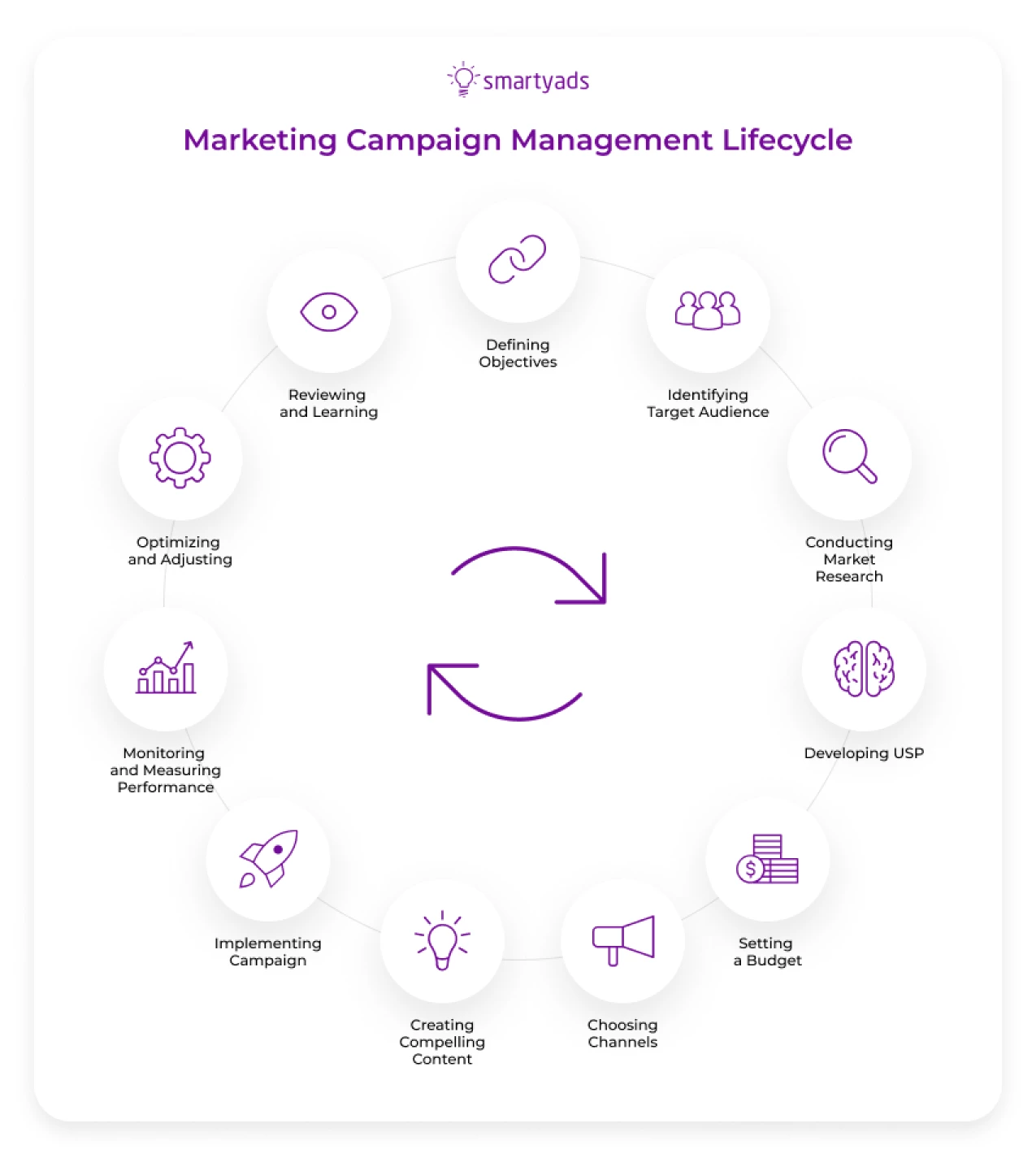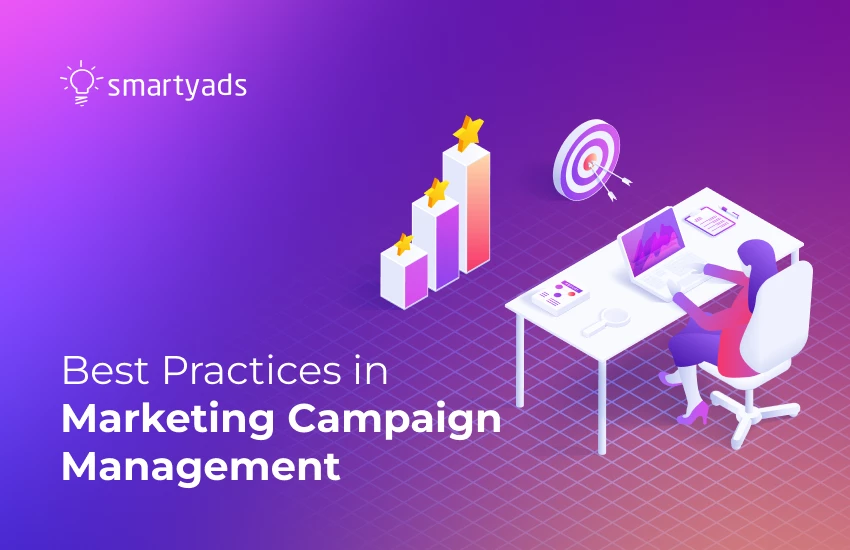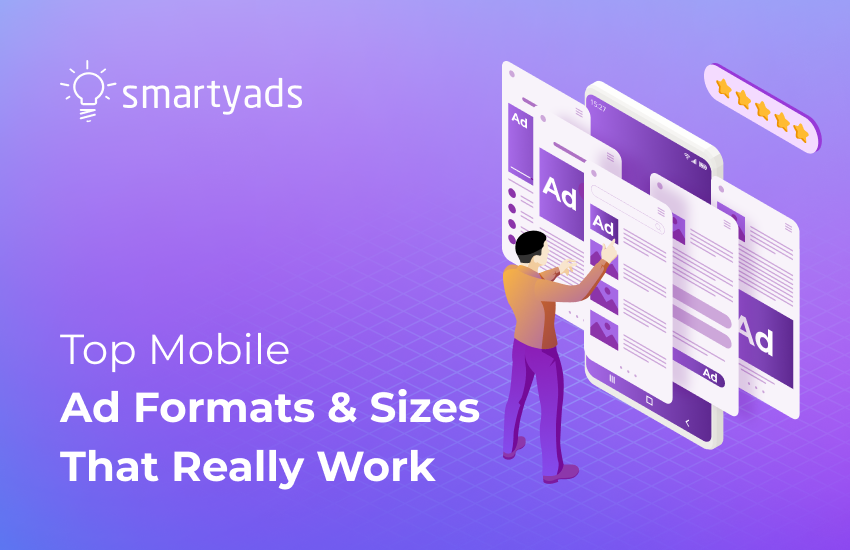In order to drive results in the 21st century, businesses must have a solid digital marketing plan in place. Digital marketing allows for advanced reach and precise targeting, facilitating the generation of more qualified leads that can be converted into business success. However, as a business owner, finding the time to develop, implement, and manage these strategies can be challenging.
So, what is the solution? It involves creating a strong marketing campaign and effectively managing it. Let's delve into everything you need to know about digital marketing campaign management.
What is marketing campaign management?
What is campaign management in marketing? It is the process of planning, executing, tracking, and analyzing marketing initiatives to achieve specific business goals. This means that you need to manage marketing activities, such as advertising, promotions, and social media efforts, to ensure they work together effectively. The management of these campaigns ensures that they are delivered on time, within budget, and meet targeted objectives.
How to plan a successful marketing campaign? 11 Steps

Define your objectives
First off, let's establish clear goals. Get specific about what you want out of your marketing efforts. Is it to increase your brand's visibility, ramp up leads, or jack up sales figures? Whatever it is, make sure your objectives are SMART: Specific, Measurable, Achievable, Relevant, and Time-bound. Setting such targets is crucial.
Identify your target Audience
Next, zero in on who you're talking to. Who is your dream customer? Dive into understanding their demographics, behaviors, and what makes them tick. This is super important because crafting messages that strike a chord with the right crowd can make all the difference.
Conduct market research
Time to do some homework on the market. Scour the landscape for trends, uncover opportunities, and pinpoint potential threats. Get to know your competition inside out — understanding what they're doing can guide you in fine-tuning your game plan.
Develop your unique selling proposition (USP)
Now, let's talk about your magic sauce — your Unique Selling Proposition (USP). Pin down what sets you apart and why your audience would be better off choosing you over the others. Embedding this essence into your campaign messaging is key.
Set a budget
Budget talks are next. What is campaign management in digital marketing? It is your budget that encompasses all of your campaign expenses, from the creative juice to the avenues chosen for spreading your word. It's vital that your budget mirrors your ambitions and expected outcomes.
Choose your channels
Choosing where to showcase your campaign is another crucial step. Pick channels that promise the best access to your intended audience, whether it's social media, email blasts, or any other medium that fits the bill.
Create compelling content
Creating content that grabs attention is next on the list. Whip up content that not only attracts but also resonates with your audience — be it blog posts, videos, or social media snippets. Staying true to your brand's voice while keeping your goals in sight is essential.
Implement your campaign
When everything's ready, hit the launch button. Unveil your campaign, ensuring that your messaging stays synchronized across all channels. Keep a close eye on things as they unfold to make sure everything runs smoothly.
Monitor and measure performance
Keeping tabs on your campaign's performance is non-negotiable. Use metrics like engagement levels, click-through rates, and overall ROI to measure success. Tools that give you insights into your campaign's performance can offer valuable clues on what's working and what's not.
Optimize and adjust
Tweaking and tuning should follow based on your findings. If something isn't clicking, don't hesitate to adjust your approach, be it through messaging tweaks, budget reallocations, or channel shifts. Staying agile is the name of the game.
Review and learn
Finally, once the dust settles, take a moment to look back and assess how things went. Match the outcomes with your initial goals, soak in the lessons, and jot down insights that could give your future campaigns a leg up.
Data-driven decision making in campaign management
Click-through rate (CTR)
CTR, or click-through rate, in the context of advertising campaign management, informs us how many individuals engaged with an ad or content piece by clicking on it after it was viewed. To compute this metric, you divide the total clicks by the number of impressions, subsequently multiplying that result by 100. A substantial CTR suggests that your content is compelling within your advertising campaign management strategy, effectively encouraging viewers to delve deeper.
Conversion rate
This is like the sequel to CTR — it's what happens next. Once someone clicks, do they take the step you hoped for, like buying something or signing up? That's your conversion rate. It’s a real measure of whether your website or landing page is doing its job right, turning visitors into fans or customers.
Return on investment (ROI)
ROI is the big picture of your marketing efforts. To calculate it, subtract your investment costs from the revenue, then divide by the investment cost and multiply by 100. A positive ROI means you're making more than you're spending, while a negative ROI means your investment isn't paying off.
Customer acquisition cost (CAC)
Remember, CAC is like the price tag for winning over a new customer. It's about efficiency — if you’re spending too much to acquire one customer, it might be time to rethink your strategy. Calculate it by dividing total campaign costs by the number of new customers gained.
Lifetime value (LTV)
Here's where we dream big — calculating LTV means you're looking at the total cash flow a customer could bring into your business over time. It's all about the long game, comparing this potential revenue against what you're spending to get customers (CAC) in the first place.
Engagement rate
This is the virtual pulse of your content — how much are people interacting with what you're putting out there? Likes, shares, comments — these actions tell you a lot about how much your audience cares and connects with your content. A high engagement rate? That's the Internet's way of giving you a high-five.
Bounce rate
Ever walked into a store and walked right out? That's the online equivalent of a high bounce rate. It means people are landing on your site but leaving without doing much. Getting this number down is crucial because it means more people stick around, hopefully, to explore and engage with your content.
7 Best practices in campaign management
Data-driven decision making
Lean into the power of analytics, letting data sculpt your strategy. By keeping tabs on crucial metrics like click-through rates, conversion percentages, and ROI, you're positioning yourself to make choices that are all anchored in insight. Understanding what resonates and what falls flat permits a cycle of enhancement, sharpening your campaigns for better outcomes.
Personalization and segmentation
Customize your marketing to touch each segment uniquely, tailoring your content and offers in your digital campaign management to match customer preferences and behaviors. Thoughtful segmentation ensures your messaging hits the right notes, elevating the impact of your digital campaign management efforts.
Customer-centric approach
Anchor every campaign to meet the needs and wishes of your customers. Crafting efforts that speak directly to their challenges and offer tangible solutions allows for a connection that goes beyond the transactional. Placing customers at the heart of your strategies fosters deeper bonds, boosts loyalty, and uplifts satisfaction all around.
Customer journey mapping
Visualization is key. Charting the path from a customer's initial awareness all the way to the purchase point illuminates crucial interactions along the way. By optimizing these moments, you amplify the user experience, smoothing out any bumps on the road to conversion.
Consistent branding
Your brand's voice and visual identity should sing in harmony across all touchpoints. Consistency not only breeds familiarity but also trust, making your brand more memorable in the crowded market space. Aligning every element with your brand ethos presents a unified, professional front.
Multi-channel integration
Embrace the breadth of marketing channels at your disposal, from social media to email, SEO to PPC, and everything in between. A harmonized approach ensures that your message reverberates across the digital expanse, greeting your audience at every turn with a cohesive narrative.
Agile campaign management
The only constant is change, making agility a prized trait in ad campaign management. Embrace an agile methodology to stay in tune with your audience and keep your campaigns cutting-edge.
Campaign management capabilities in SmartyAds Self-Serve DSP
SmartyAds leads in programmatic advertising, offering a user-friendly demand-side platform with precise targeting and access to top-tier ad spaces.
Self-serve advertising made simple
Imagine having all your essential advertising tools under one roof. That's the convenience offered by SmartyAds' self-serve platform. It's designed to demystify the marketing campaign optimization process, enabling you to kickstart, oversee, and fine-tune your advertising endeavors without breaking a sweat. This unified control panel means you can bid farewell to juggling multiple platforms, saving you time and supercharging your efficiency.
Unparalleled customer support
Our team of savvy professionals is here to guide you through the maze of advertising campaigns. At SmartyAds, exceptional customer service isn't just a promise — it's a practice. We're by your side at every turn, ready to lend our expertise for setup, optimization, and analytics. Our goal? To empower you to unleash the full potential of your campaigns.
Smart optimization at your fingertips
Dive into the world of automatic CPM adjustment and click boosting to propel your campaign to stardom. SmartyAds leverages sophisticated algorithms to fine-tune your ads for optimal performance, ensuring your message resonates loudly and clearly. With our tools, strategic decision-making becomes your focus while we handle the nitty-gritty of optimization.
The thrill of RTB deals
Snap up prime ad real estate in the exhilarating landscape of real-time bidding (RTB) programmatic auctions. SmartyAds opens the door to RTB opportunities, where you can secure premium ad spots in the blink of an eye without stretching your budget. This means your ads not only look great but are placed where they'll make the biggest impact.
Sealing the deal directly
Navigate to the 'Inventory' section, key in your direct deal ID, and start transacting directly with publishers. By facilitating direct deals, SmartyAds lets you cut through the middlemen, ensuring you get exceptional ad placements straight from the source. This level of control can significantly boost your performance marketing campaigns.
Access to premier inventory
Step into a world where quality ad inventory is the norm, not the exception. From RTB and PMP auctions to direct partnerships with publishers and global giants like Google and Xiaomi, SmartyAds ensures your campaigns shine in the best possible spots. This premium inventory is key to engaging your audience and driving your marketing objectives home.
Conclusions
Online campaign management is crucial for businesses. SmartyAds’ Self-Serve DSP offers automated optimization, RTB deals, and top-notch inventory. It's user-friendly and provides exceptional customer service. This helps businesses stay competitive and achieve sustained success and growth.
Start managing marketing campaigns with SmartyAds’ Self-Serve DSP.




![In-App Advertising: the Complete Guide [Updated 2025]](/storage/uploads/2020/september/in-app-advertising-trends.png)